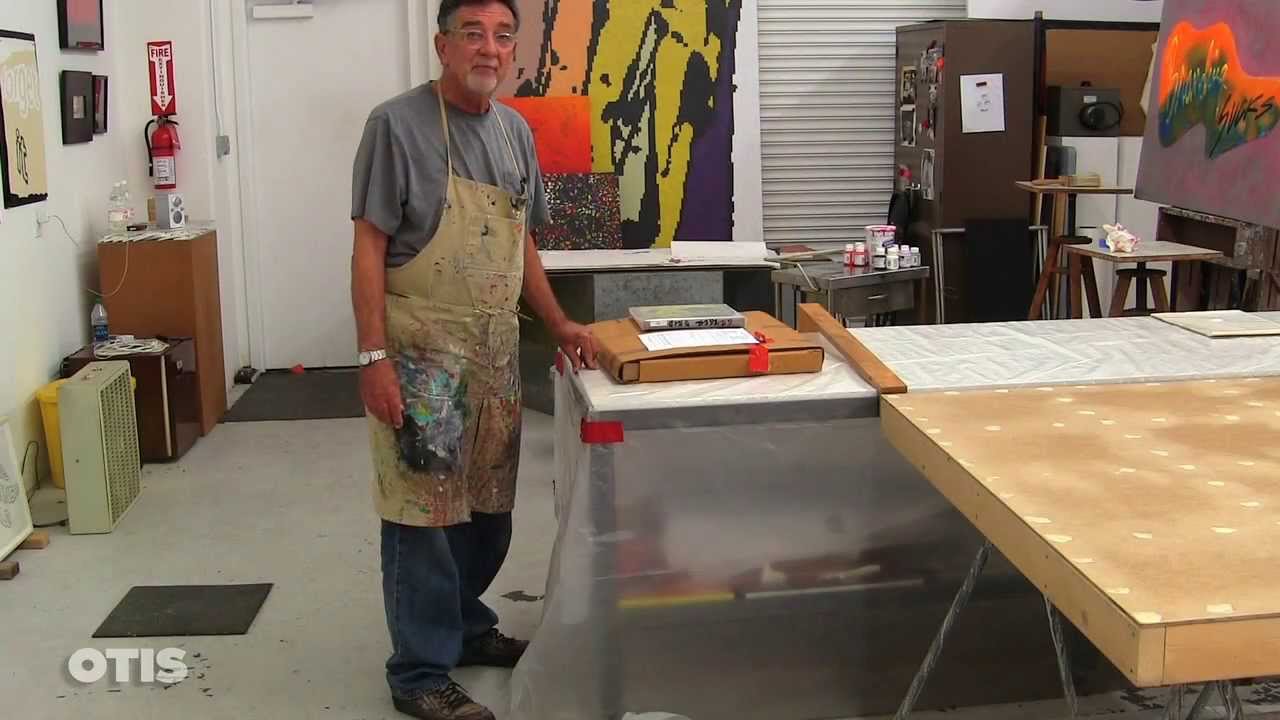Scott Grieger is a Full time Professor at Otis College of Art & Design in Los Angeles. He is currently the Director of the Painting Program in the Fine Arts Department. In his tenure at Otis for over 3 decades, Grieger has served as Chair of Fine Arts, Acting Chair of Graduate Studies, and Chair of Foundation. In this video, he shares good habits to learn with his beginning painting students.
http://www.otis.edu/faculty/scott-grieger
http://www.scottgrieger.com
OtisCollege
Source




Thanks Scott. So many great tips. Much appreciated. Linda
OMG…You should know because you're a professor, that you can be poisoned by heavy metals from paint through the skin. You should wear gloves. I used like you the same method of washing brush. After 3 years I got poisoned by lead, cadmium, and who knows what else. I realized it when my hair started to fall out, and my blood was tested in the lab. Poison is absorbed through the skin. Always wear gloves or wash brush another method.
shocked to see you used well over 10 ltrs of precious clean water to clean 1 skinny little brush.
shame shame shame!~
good video. great paintings and guitar skills. should have covered a painter's stick instead of bridge and trimming your brushes/ venthillation
It's also a good idea to use a mahl stick for detail work.
thank you
This video is probably helpful to an acrylic painter but it doesn't apply to oil painters except for painting clothing. Also a lot of unsafe environmental practices here. Disposal palettes only add waist, better to invest in a good plexiglass one and use it for months. Also he should be washing his brushes into a filtration system not directly into the ground. Altogether he seems rather reckless about his environmental impact. Not a great lesson to pass on to his students.
Nice tips especially for beginners, and and how you clean your brush's is fine since that suits you the same as i would.
Don't wash your bare hands in paint waste water! That's ridiculous. Cadmium, magnesium, lead, cobalt, etc. are toxic whether bound in oil or acrylic. For best studio practice, wear gloves while washing brushes using the method of "smooshing and swirling" the bristles around in the palm of your hand. Or, use some other method. Cheers.
Always like watching this video lol , now I doing acrylics too. LOl
Winks
Lisa
Otis sucks and this video demonstrates WHY. Godawful paintings with rubber, disposable palettes, gallons of wasted water, dumb sign-worker's bridge, dumb paintings, awful slide guitar. Absolute failure to pay the rent by sold paintings…gotta TEACH mediocrity to those who can't teach themselves. Acrylics are rubber, lifeless pigments. Don't use them!
You should really provide transcripts or captions for these videos! 🙂
Good video, very instructive, thanks!
I love your painters bridge!
GREAT
Thank you my friend!
Notice his apron:
it took me over a decade to figure out ?how tiring an apron hanging & pulling on the back of your neck?can be for hours at a time.
I stumbled over a Japanese apron & suddenly ?I figured it out?
??????#OTIS. Can you tell me what you use to put on your floors to protect them? Im getting ready to splatter some paint on a huge canvas in my spare bedroom and I need to protect the whole surface of my hard wood floors? ANY IDEAS OR SUGESTIONS??????
i think you need a new camera operator
Thanks……enjoyed. Obvious when you know how!
Great video! Thanks for sharing~ Having a sincere prof like you is nice.
For cleaning up the brushes, I use a regular laundry bar soap in a soap dish so that I can scrub it easily.
I use a thick glass as my palette when I'm Painting the background and using thick paints on certain areas, scraping it out when I'm done. Then I also use a wet pallette for skin tones or other colors that I tend to use another day (with a cheap wide Tupperware like container, with parchment paper and wet tissues under)
so cute
"THANK YOU, MR. SCOTT GRIEGER FOR THE IDEAS! – FROM BRASIL." – M.S.C.
Thanks Scott!! : )